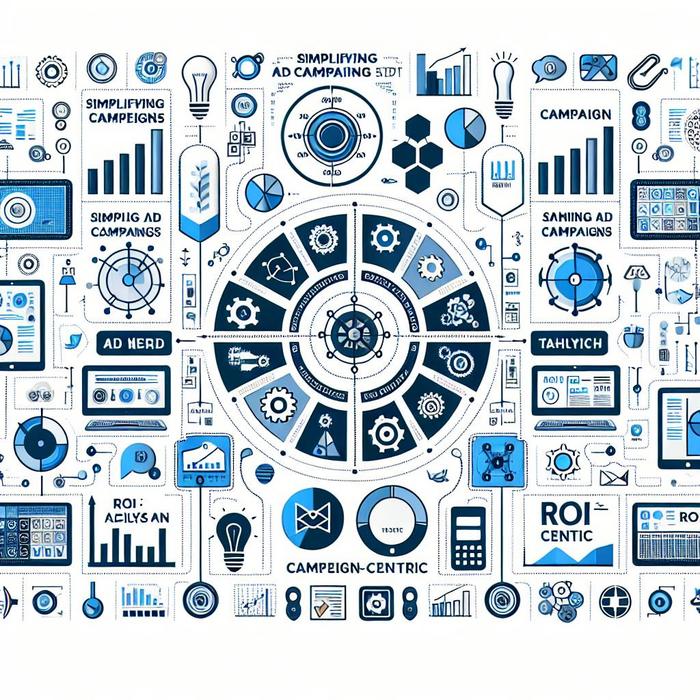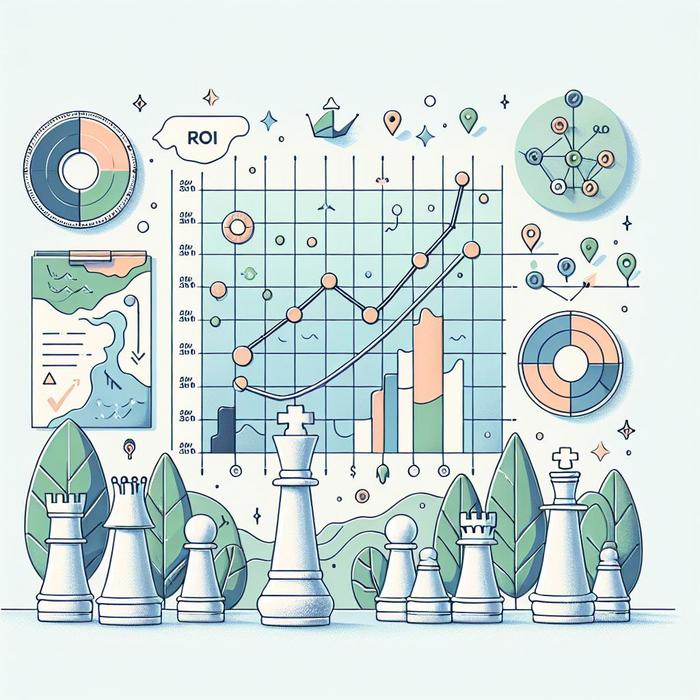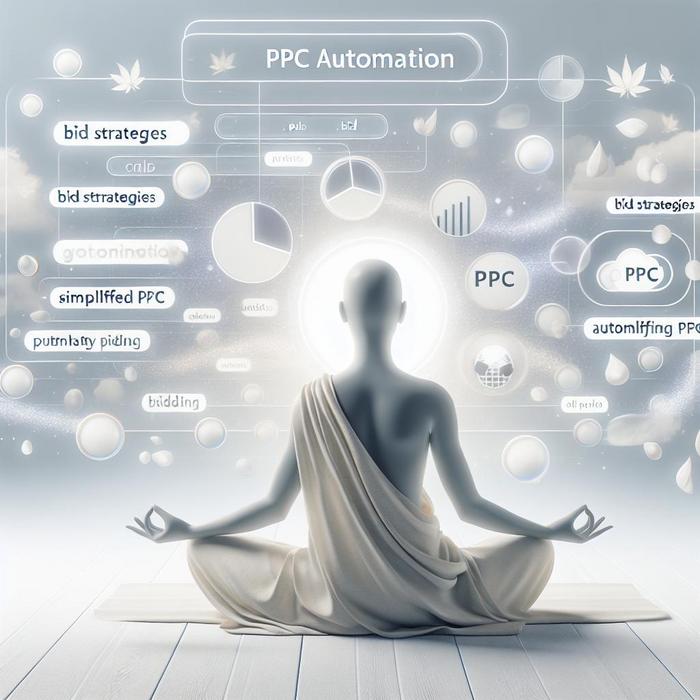Why Data-Driven Bidding Is the Future of Ad Spend Optimization
Defining the Power of Data
One thing is certain: The age-old saying “knowledge is power” still holds true. Particularly when that knowledge is derived from actionable data insights. Using data to drive decision-making in advertising campaigns has emerged as a pivotal strategy for C-suite executives, empowering them with the means to maximize their Return on Ad Spend (ROAS). This strategic approach has been seen in platforms such as Google, Meta, and TikTok, where advanced advertising algorithms are utilized to target feature-rich campaigns effectively.
TikTok Vs. Google: A Comparison of Data-Driven Strategies
Consider the TikTok and Google digital platforms. While both platforms utilize data to optimize ad spend, how they leverage this data is quite distinct.
Google, like other search engine platforms, leans heavily on the power of search data, providing marketers with insights into user search behavior. These insights aid in tailoring effective ad campaigns that target the right audience at the right time, thereby reducing wasted ad spend. Google’s approach is focused on conversion values, maximizing marketers’ ability to optimize their campaign budget and increase overall marketing performance.
On the other hand, TikTok, as a content-driven platform, utilizes user engagement data to deliver personalized ad campaigns. TikTok’s machine learning algorithms analyze user behavior and engagement metrics to offer advertisers a broad scope of targeting options, leading to efficient ad spend use. The end result? High-impact, resonant, and cost-effective ad campaigns.
Meta: Precision and Scale in Ad Spend Optimization
The ad tech giant, Meta, formerly known as Facebook, uses a similar innovative ad tech approach to deliver user-centric advertising. Meta’s wealth of user data and advanced machine learning tools allow for precise targeting and optimizing of ad campaigns on a large scale. The performance indicators provided by Meta’s comprehensive analytics tools offer marketers the knowledge to make strategic decisions that enhance ad performance, control spend, and drive growth.
Finding the Sweet Spot with Advanced AI and Analytics
Advanced AI and analytics tools are crucial in fully harnessing the potential of data-driven bidding. These tools pave the way for a deeper understanding of customer behavior, better optimization techniques, and improved marketing outcomes.
For instance, implementing AI-backed strategies into your PPC campaigns enables you to predict customer lifetime value (LTV), a key metric in evaluating the effectiveness of your marketing initiatives. Predicting LTV not only helps to allocate marketing resources more efficiently but also transforms marketing ROI by focusing efforts on high-value customers.
Moreover, the use of advanced analytics tools provides real-time insights into campaign performance, allowing for proactive campaign adjustments that enhance ad relevancy and optimizes PPC data. This means more conversions, higher customer engagement, and a better bottom line.
Forward-Looking Strategies in Data-Driven Bidding
Executive leaders are keenly aware of the need for forward-looking strategies. The integration of AI and machine learning in ad tech platforms is rapidly becoming the cornerstone of these strategies.
Through this integration, platforms like Google, Meta, and TikTok are transforming the way we understand and engage with our audiences. They are providing a more nuanced view of customer behavior, and in effect, empowering marketers to make more informed, data-backed decisions. The resulting competitive edge is not merely in the potential for increased conversions, but also the revolutionary shift from a traditional cost-per-click (CPC) model to a more evolved, data-driven, strategic approach.
Never before has the adage “knowledge is power” been more significant. The shift toward data-driven strategies is not only transforming the way we advertise but also how we gauge success. It’s no longer just about how many clicks an ad gets, but the value each click brings.
Bridging the Gap with Meta & TikTok: Delivering Contextual and Personalized Outreach
When comparing Meta and TikTok’s approach, one can see a healthy blend of contextual and personalized outreach. Meta’s machine learning algorithms provide advertisers with a detailed view of user demographic and psychographic profiles. TikTok, meanwhile, offers a more content-centric view, gauging user interest based on content interaction and feedback. This amalgamation of user data, along with high-powered AI, aids in crafting tailored, resonant messaging that engages the audience effectively and helps drive business objectives.
Redefining Performance Indicators, Harnessing the Power of Engagement
Incorporating data-backed strategies in advertising campaigns also means redefining what constitutes performance. Traditional metrics, such as click-through rates and impressions, are giving way to advanced engagement metrics. Understanding user behavior, interaction nuances, and content resonance are becoming primary indicators of campaign efficacy in sophisticated platforms like Google, Meta, and TikTok.
This shift towards data is not merely about maximizing ROAS but also about strengthening audience engagement. Google’s remarketing strategies, Meta’s dynamic content optimization, and TikTok’s algorithm-based discoverability are heavily dependant on measuring user interaction and engagement.
Unleashing the Power of Predictive Analytics
Furthermore, data-driven advertising is also making strides in predictive analytics, which helps executive officers forecast trends, anticipate customer behavior, and make informed marketing decisions. By analyzing historical data patterns, predictive models enable organizations to assess potential outcomes, minimize risks, and make well-grounded forecasts about future performance. This level of foresighted planning can have a transformative impact on strategic decision-making for C-suite executives. Empowering leaders with such nuances allows them to optimize their overall marketing strategy and foresee potential hurdles beforehand.
Optimal Platform Selection: An Inevitable Culmination of Data Strategy
Choosing the right digital platform for ad spend comes down to aligning the platform’s strengths with the marketing objectives. For instance, Meta thrives on in-depth demographic and psychographic data, making it ideal for brands seeking to establish a strong connection with their audience through personalized content. Meanwhile, TikTok’s strength lies in its ability to generate virality based on content resonance and user feedback, making it an ideal choice for brands seeking broad-market appeal. Google’s search data supremacy provides a competitive advantage to those looking for strong intent-based targeting. Such strategic platform selection, anchored in data-driven insights, emphasizes the importance of data.
Combatting Ad Fatigue through Evolving Strategies
A noteworthy advantage of this surge towards data-centric strategies in advertising is the ability to combat ad fatigue. Continuous exposure to the same type of advertising content tends to diminish consumer responsiveness over time. By leveraging insights from consumer interaction data and following data-backed ad rotation strategies, brands can maintain higher engagement levels and ensure advertising messages remain fresh and appealing.
The Synergy of Data-Driven Strategies and Trust Building
These data-centric strategies complement perfectly with trust-building exercises that executives carry out in their organizations. When customers see the brands predicting their needs and preferences accurately, delivering right-fit messaging and showing empathy towards their dilemmas, it nurtures a bond of understanding and trust. Effective ad campaigns built on solid data play an instrumental role in fostering this trust, contributing to a strong brand image and larger customer loyalty.
In closing, the convergence of data and technology in digital advertising has initiated a paradigm shift in strategic marketing decision-making. Data-driven strategies have moved from being a ‘nice to have’ to a ‘must-have’ component in the executive toolbox. As we continue to evolve, the deep-seated impact of data-backed strategies is bound to expand at an accelerating pace, forever transforming the face of advertising.











